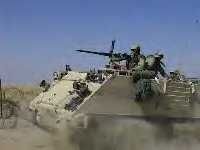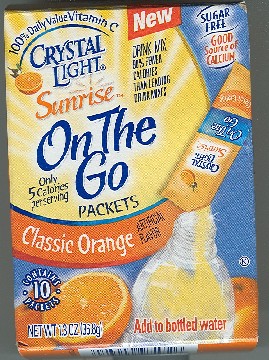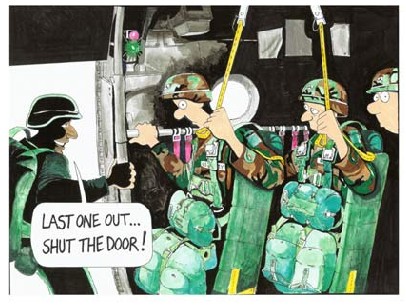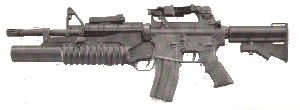



YOU CAN BE SWEATING AND STILL DIE FROM HEAT STROKE...


Wednesday, August 16 , 1995
THE FORT BRAGG POST
Recently, a S.C. U.S. Army National Guard Soldier died from (according to unofficial reports), heat stroke. Researching professional medical journals for this article, I discovered that a dangerous untruth runs rampant throughout our military: that "if you are sweating, you can't be having heat stoke." While it is true that the "classic definition of heat stroke is:
-- high body temperature (106 degrees+F)
this is only one kind of heat stroke that relates primarily to elderly people who have circulation problems.
We are failing to realize that there are TWO kinds of heat stroke; the second kind is called "exertional." This type happens to younger people who, after physical exertion, raise their body heat to such high levels that even though their body's thermostat can still be working--translation: they can still be sweating and circulating blood for cooling--this sweating/fluid heat transfer is not enough to lower the core body temperature to prevent cells from being destroyed. Mental sluggishness, delirium and convulsions follow as the brains malfunctions.
In his paper, "Environmental and Thermal Injury" Dr. Mark Bracker (M.D.) states, "Heat stroke may be divided into two distinct categories: classic and exertional. The mechanism of classic heat stroke is poor or impaired dissipation of environmental heat, whereas exertional heat stroke is precipitated by excessive endogenous heat production".
Dr. William Roberts (M.D.), Medical Director for the Twin Cities Marathon: "Heat stroke usually happens abruptly with convulsions, delirium, or a sudden loss of consciousness....those suffering from heat stroke in athletic situations are nearly always sweaty......."
"Heat stoke is a life-threatening, medical emergency that has to be treated aggressively or the patient could die within hours" U.S. Army Cpt. Herman Barthel stated prior to Desert Storm; "Complications of heat stroke can kill a patient within a few hours. Fatality rates range from 0 to 40%. Rapid treatment often prevents these complications."
The true sign of whether a soldier is having heat stroke or not is an ALTERED MENTAL STATE-- NOT THE ABSENCE OF SWEATING. We are sometimes making the serious mistake of treating Soldiers for heat exhaustion when they might be in HEAT STROKE because we still see signs of them sweating. This is the wrong thing to base a Heat Stroke decision on.
Just because they are sweating doesn't mean that their body's temperature is at safe levels, in high humidity areas like here at Fort Bragg. The air is so saturated with water vapor and the Soldiers so heavily covered with thick BDUs and nylon field gear that heat loss cooling effect by sweat evaporation comes almost to a standstill.
The Paratrooper reported about in The Post last month, who was unconscious had to be revived onboard a C-130, was indeed stricken with HEAT STROKE, not heat exhaustion evident by the very fact of her mental state, sweating or not sweating.
Dr. Sheldon Jacobson (PhD), emergency services director, University of Pennsylvania Hospital, wrote in the May 15, 1992 Emergency Medicine magazine, "What findings are most striking? Certainly his blood pressure and weak pulse and of course his temperature are all noteworthy, but the key vital sign is mental state. ....... The fact that he's unresponsive provides the diagnosis of heat stroke..."
Soldiers felled by heat stroke are sometimes being asked to drink water while in a delirious state when what they need is to have their clothes removed, be drenched in cold water, fanned and placed in an ice-water bath until their temperature lowers to 102 degrees Fahrenheit.
Cpt. Barthel says measures to lower the individual's body temperature should be initiated at "the earliest possible moment." He describes in his article how open body bags are being used as expedient ice-water tubs in field hospitals and battalion aid stations.
Dr. Jacobson states: "Water has 25 times as much capacity for heat as air, the transmission of heat through water is so great, that the heat is just sucked out of the patient by physical means...."
Some may say that this is over-reacting. Is it? Dr. Jacobson: "Several investigators have devised a less drastic technique of body cooling. They use misting machines and fans, but neither ice nor ice water. These techniques were developed for use in the deserts of Saudi Arabia, where low humidity may permit adequate atmospheric cooling for them to be effective"
He continues: "I doubt those measures would be adequate in temperate climates for people with critical heat stroke. [Author's note: this means Fort Bragg, Panama, etc.] I have seen such patients die in the emergency department while being treated with inadequate cooling measures. Some patients may be minutes away from irreversible cell death, and I believe that ice-water immersion is the only way to manage them...."
Throughout the Department of Defense this "sweating myth" has been perpetuated by incorrect medical information used in field manuals/training.
In our haste to simplify complex medical realities into simple warning signs which soldiers can more easily remember we have accidentally used the WRONG DEFINITION OF HEAT STROKE.
Our simplistic training acronyms may be resulting in cases where we are not treating correctly soldiers who actually have HEAT STROKE which is resulting in irreversible cell damage to the internal organs of our heat-stricken soldiers and in some cases death.
Heat stroke can destroy cells and entire internal organs of the body resulting in death in just a few hours, or irreparable damage which the soldier will have to live with for the rest or his life. Dr. Kathleen Delaney (M.D.) says in the March, 1992 PostGraduate Medicine magazine: "The longer the temperature is elevated, the greater the chance of tissue injury."
My contentions is that we are not treating soldiers "rapidly" as Cpt. Barthel and other experts insist for their heat stroke conditions with the necessary aggressive life-saving measures because we haven't seen the skin stop sweating. We seem to not want to believe a soldier's life is in danger, or that drastic measures are needed to save that life. This stems from a simplistic, flawed understanding of heat stroke.
FIX FIELD TRAINING MANUALS & TECHNIQUES NOW
Written medical doctrine, field, common training task (CTT) manuals and formal military medical instruction needs to be amended in light of these findings.
BETTER HYDRATION AND LOAD BEARING MEANS
Dr. Jacobson; "The human mechanism can be overcome by both the amount of heat that is produced and the atmospheric cooling power. Even a well acclimatized person will continue to retain heat if he's unable to vaporize sweat, and the result is heat-related disease, as in the case of our soldier..."
While it is true that forcing water into your body ahead of thirst signals just short of vomiting for the "clear urine" check improves blood volume for hot blood to circulate to the body's edges for heat dump-off and give your tissues water for sweat evaporation, it can be hindered if you cover your body with starched BDUs and nylon TA-50.
U.S. Army Captain Herman Barthel states; "Just as important in the prevention of heat stroke is clothing. One must wear non-restrictive clothing. Non-restrictive clothing allows for evaporation which is the only method to dissipate heat when the ambent temperature is greater the 99 degress F." Military Medicine, March 1990.
So what are we doing about it? We are replacing current 100% cotton BDUs with a so-called "new" Hot Weather BDU that is 50% nylon to save money since they don't wear out as quickly as the somewhat breathable all-cotton BDUs. Judging from the description of this "new" BDU being just as cluttered with pockets and unnecessary material as the current BDU it's hard to believe that it will anything but hotter than we have now.
We need to change official DA policy to prohibit BDUs from being starched EVER, only cleaned and pressed. BDUs made of 100% cotton-ripstop material should be allowed to be worn indefinately until no longer serviceable---Soldiers not forced to buy the nylon-cotton ones at $50 a set or else. They look the same, so it shouldn't matter. If I were you, I'd buy up every 100% cotton BDU I could get my hands on while they are still available and eliminate excess material on BDUs to improve their function/cooling.
Whatever money we will save in uniforms could easily be lost in medical costs and in "blood" by dead or internal-organ maimed Soldiers. An extremely important part of eliminating heat casualites is better clothing and field equipment that perfoms tasts with the least amount of material via multi-funtionality.
One item for four tasks etc. instead of the current one-item for one task TA-50 system, such a system is described in detail throughout the 1st Tactical Studies Group (Airborne) Web sites. Since such an optimized system is yet to be fielded, there are limits to what you can do to improve/replace what you have, so you need to insure that evaporative cooling is occurring even if your body is blocked by field gear, especially body armor.
What we did in the desert was for each man to carry a small spray bottle of water to "mist" himself for periodic evaporative cooling for the minimum amount of water possible. A better one-quart canteen cover with flap that completely covers the canteen closed by fastex quick-release clips instead of unreliable metal snaps could hold the spray bottle or canteen securely from falling out or touching chemical-biological agents. Commercially available moisture pads can be worn under the helmet to cool the head where the majority of heat trying to escape can be trapped. "Desert Water Bags" at a mere $7.50 each bought at a dozen at a time have skins that evaporate and give cool water to Soldiers that is tremendously more ffective than warm water at keeping the inner body core cool need to be upgraded with better straps and backpack style carriers and drinking tubes for hands-free use. Soldiers should be authorized at all times to be able to wear on their backs "Camel-Bak" type drink-on-the-move water bladders as long as they are either in black, olive drab or camouflage colors. Details for militarizing the Camel-Bak inexpensively are described on the Airborne Equipment Shop link. Talk is cheap. If you want Soldiers to be better hydrated, then let them do so.
Another problem area that can be solved is electrolyte loss: put a packet of "Nutrasweet" flavored "Gatorade" type drink mix in the Meal-Ready-Eat that will make a FULL ONE QUART CANTEEN'S WORTH of sport drink to enciourage Soldier hydration. The current drink mixes only make a canteen cupful of drink--who has time to clean out a dirty canteen cup and mix a drink into it and hold a cup in your hands? We need a sports drink accessible while on the move in the field--and on the battlefield.
SOLUTION:
-- absence of sweating (hot, dry skin)
-- altered mental state
We don't need a full-scale investigation and/or witch-hunt for guilty parties; the truth about heat stoke that has been in print for small circles of medical professionals needs to be passed on immediately to every soldier and military medical personnel who need to improve their medical practices accordingly.
The second deadly myth is that forcing water  will solve all our heat casualty problems when the truth is the restrictive clothing (Battle Dress Uniforms--BDUs and TA-50) and high humidity can negate the body's cooling mechanisms.
will solve all our heat casualty problems when the truth is the restrictive clothing (Battle Dress Uniforms--BDUs and TA-50) and high humidity can negate the body's cooling mechanisms.

Packette (what should be in every MRE)

As most of you know, the MRE comes with a pathetic packet of defacto Kool Aid (sugar flavored drink mix) suitable just for 1 canteen cup of water.
Dude!
No one has got time to wash out the canteen cup and make Kool Air...either its in the 1 quart (32 ounces) canteen or camel-bak or its not there.
Visiting Wal-Mart last night I found something believe it or not--- that IS NOT MADE IN CHINA----Crystal Light ON-THE-GO drink packets that will flavor 1/2 a canteen....16.9 ounces....
So here is the idea....
Units buy en masse Crystal Light packets to flavor either bottled water or in concert with MRE packets, 1 quart canteens.
Get this going as common troop SOP so it shames Natick Labs to offering Crystal Light packets in each MRE with the sugar flavored Kool Aid packet.
While internal hydration is first priority, such helps/improved equipment are necessary for a power-projection Army Airborne that can deploy to anywhere in the world with 18 hours without the time to allow soldiers to acclimate.
Pvt Murphy's View

 Return to Paratrooper 2000, click on M4 5.56mm Carbine with M203 40mm grenade launcher
Return to Paratrooper 2000, click on M4 5.56mm Carbine with M203 40mm grenade launcher